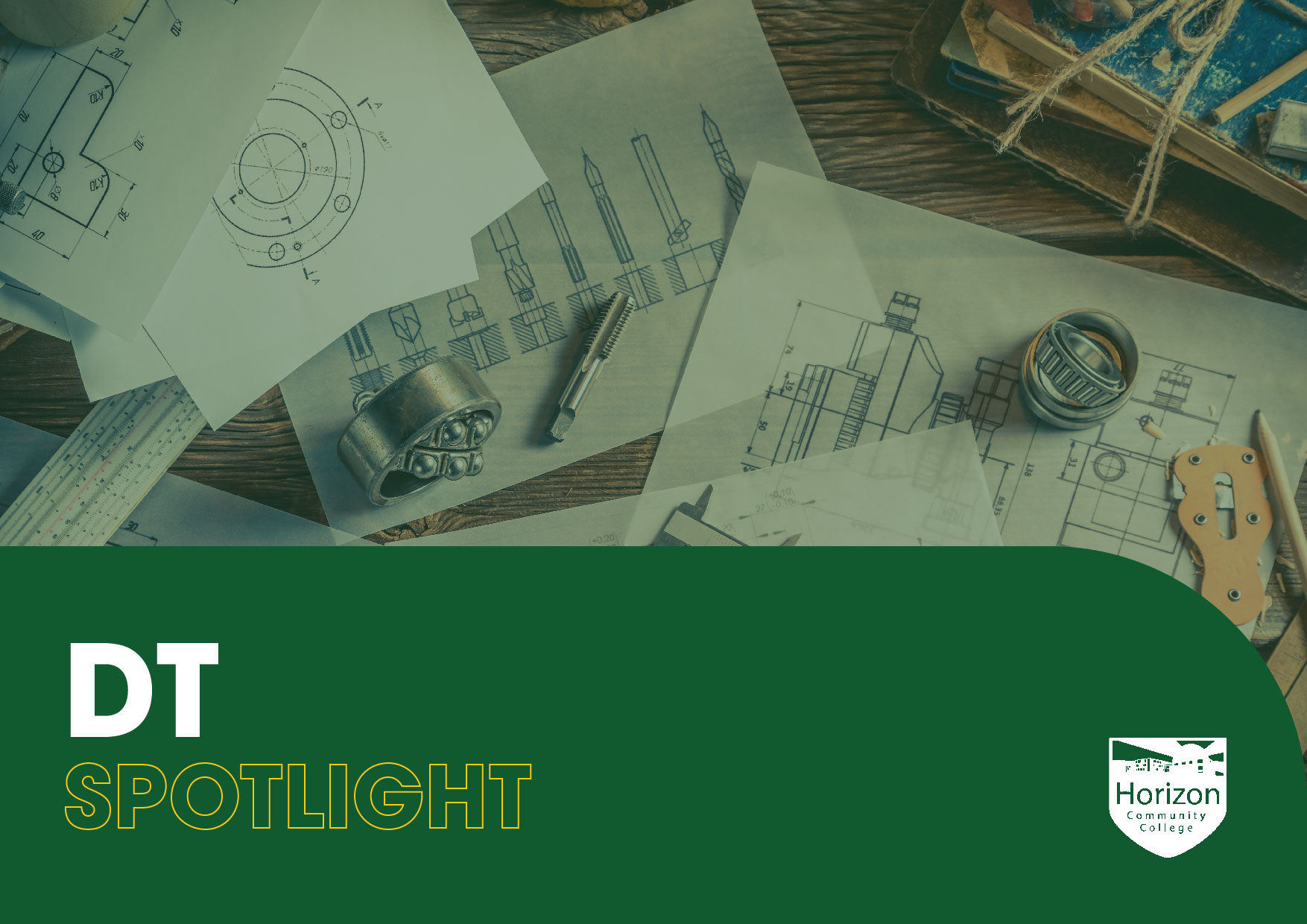CURRICULUM
Design Technology
DT Curriculum Intent
Design and Technology develops students’ understanding of the ‘physical’ world. They learn to design, make and evaluate everyday products, considering their own and others’ needs, wants and values. Key concepts include creativity and imagination. Rather than contribute to a disposable society, students become proactive thinkers, able to appreciate the effort, time and resources used to create all products. They explore how they can reduce their impact while still having an impact.
Click here to see where DT can take you
Key Strands
Design
- use research and exploration, such as the study of different cultures, to identify and understand user needs
- identify and solve their own design problems and understand how to reformulate problems given to them
- develop specifications to inform the design of innovative, functional, appealing products that respond to needs in a variety of situations
- use a variety of approaches [for example, biomimicry and user-centred design], to generate creative ideas and avoid stereotypical responses
- develop and communicate design ideas using annotated sketches, detailed plans, 3-D and mathematical modelling, oral and digital presentations and computer-based tools
- select from and use specialist tools, techniques, processes, equipment and machinery precisely, including computer-aided manufacture
- select from and use a wider, more complex range of materials, components and ingredients, taking into account their properties
Make
Evaluate
- analyse the work of past and present professionals and others to develop and broaden
their understanding - investigate new and emerging technologies
- test, evaluate and refine their ideas and products against a specification, taking into
account the views of intended users and other interested groups - understand developments in design and technology, its impact on individuals, society and the environment, and the responsibilities of designers, engineers and technologists
- understand and use the properties of materials and the performance of structural
elements to achieve functioning solutions - understand how more advanced mechanical systems used in their products enable
changes in movement and force - understand how more advanced electrical and electronic systems can be powered and used in their products [for example, circuits with heat, light, sound and movement as inputs and outputs]
- apply computing and use electronics to embed intelligence in products that respond to inputs [for example, sensors], and control outputs [for example, actuators], using
programmable components [for example, microcontrollers]
Technical Knowledge
Cooking & Nutrition
- understand and apply the principles of nutrition and health
- cook a repertoire of predominantly savoury dishes so that they are able to feed
- themselves and others a healthy and varied diet
- become competent in a range of cooking techniques [for example, selecting and
- preparing ingredients; using utensils and electrical equipment; applying heat in different
- ways; using awareness of taste, texture and smell to decide how to season dishes and
- combine ingredients; adapting and using their own recipes]
- understand the source, seasonality and characteristics of a broad range of ingredients.
Key Strands
Component 1: Portfolio 60%
Each student must select and present a portfolio representative of their Textile work.
The portfolio must include both:
- A sustained project developed in response to a subject, theme, task or brief evidencing the journey from initial engagement with an idea(s) to the realisation of intentions.
- A selection of further work resulting from activities such as trials and experiments; skills-based workshops; mini and/or foundation projects; responses to gallery, museum or site visits; work placements; independent study and evidence of the student’s specific role in any group work undertaken.
